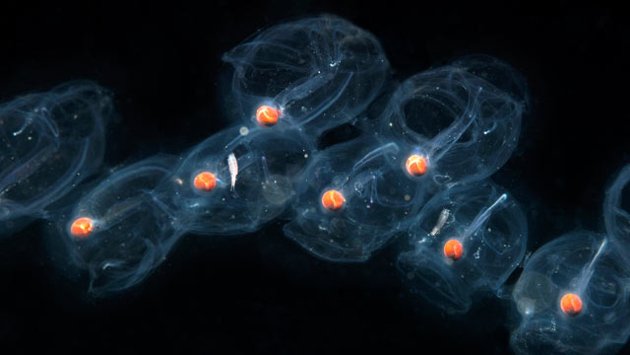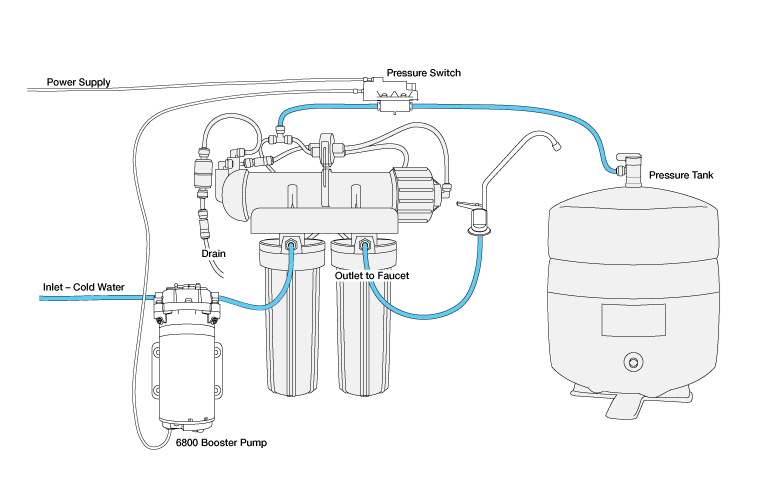Water News for April 2012
While you were putting away your winter clothes and celebrating Earth Day, a lot of important things happened in the world of water. Read on to hear all about it.
Forty-one years ago a train derailed and spilled 200 tons of what is now known as trichlorethylene (TCE) in the Le Roy, N.Y. area. The leak is still causing problems today. One of the most remarkable environmental messes in the area's history was triggered when a train derailment dumped 200 tons of toxic chemicals on the porous bedrock of rural Genesee County. It was the single largest spill on record in New York state of the human carcinogen known as trichloroethene, or TCE. It fouled 4 ½ square miles, but after a brief emergency response, local officials walked away. State and federal government agencies charged with addressing environmental contamination overlooked the accident - for nearly 20 years. Real all about it.
The student government at the University of Texas in Austin is attempting to improve the safety of drinking water on campus by installing fluoride filters on some campus drinking fountains, making UT the first college in the nation to offer such a plan
Because of EPA action, Polidori Corporation, Inc. is paying $30,000 in damages for pollution caused at Panguitch Lake in Utah.
A hotel in Albany, NY that was plagued by an outbreak of Legionnaire's disease last year now has a clean bill of health.
Workers attempting to clean up hexavalent chromium contamination at a site along the Columbia river have had to remove contaminated soil 85 feet deep--just a foot above groundwater level. The excavation area is the size of 15 football fields.
A small number of wastewater plants around the world are already energy self-sufficient. Recently more than 30 global experts convened in Raleigh, NC to discuss a vision for future energy performance and a plan to help more wastewater utilities become net energy producers.
The popular weed killer Roundup in water can cause body-shape changes in amphibians.
In spite of drought conditions in much of the country,
Louisville, KY has had a yearlong run of soggy weather that is raising groundwater levels under the city to record levels — posing potential problems for construction and buried utilities such as water, sewer and electrical lines.
A Stratford, Wisconsin shoe manufacturer was ordered to pay $122,500 in fines and attorney fees for allowing polluted wastewater to flow into municipal sewers.
NASA is supporting a plan to use wastewater in the production of biofuel.
"Human-Made" earthquakes in the central U.S. are being blamed on oil recovery procedures.
Residents of Hinkley, California are being offered POU/POE treatment devices by a local utility to fight chromium-6 in their drinking water, according to news reports. About 300 homes can choose from either deeper wells or water treatment systems.
In an obvious conflict of interests, two of the country's largest private water utility companies are participants in a massive lobbying effort to expand controversial shale gas drilling.
The EPA has made an agreement with Amtrak to provide safe water for train travelers.
The earthquakes that shook Youngstown and drew national attention to “fracking” waste disposal wells haven’t stopped businesses from wanting to drill more of them in Ohio.
Toxic PCBs, banned since 1976, were discovered in wells at Greenwich Connecticut High School.
Should You Be Worried About Arsenic in Your Water?
by Gene Franks
(Reprinted from the Pure Water Gazette.)
Humans have always had to deal with contradiction. What’s good today is bad tomorrow. Science stakes out a rigid position and in most cases eventually decides that the opposite is true. The American Medical Association would like you to forget that it endorsed and defended tobacco smoking and told mothers that breast milk was nutritionally inadequate just a few short decades ago. Chlorine, coffee, fluoride, knee surgery, sugar, estrogen therapy, therapeutic bleeding–you could name dozens–have had their ups and downs.
We’re so used to contradictory information that people didn’t get too excited when the EPA announced that the allowable safe level for arsenic in water really isn’t 50 parts per billion (ppb), as “the experts” have been telling us for years, but it is really only 10 ppb.
How did the government’s mandated “safe” level of arsenic in drinking water shrink overnight from 50 to 10 parts per billion? Does this mean that arsenic suddenly has become more lethal? Should we take the 10 ppb limit seriously, or is it just another Swine Flu-style fundraiser?
The new arsenic limit should definitely be taken seriously. Arsenic poisoning is terrible. And lowering the level took some real political courage. Water utilities that were overnight out of compliance were faced with very expensive treatment requirements, and they screamed loudly.
The big drop in MCL for arsenic actually makes sense. The initial limit for arsenic was set at 50 simply because test labs before 1975 weren’t able to detect arsenic at levels below 50 ppb. As tests got better, it became obvious that 50 ppb was too high.
After much deliberation the EPA, with intense political pressure from both sides of the issue, proposed reducing the allowable to 5 ppb in 2000, although the final rule did not take effect until 2006. The number by that time had been negotiated up to the current 10 ppb. (Two states, North Carolina and New Jersey, have independently set the arsenic allowable at 5 ppb.)
Arsenic poisoning is implicated in cancers of the bladder, lungs, skin, liver, prostate and kidneys as well as non-carcinogenic endocrine, pulmonary, cardiovascular, and neurological damage. At around 60 parts per million in food or water it is an immediate threat and can result in sudden death. (Note that that’s 60 parts per million, which is 60,000 parts per billion–or 6,000 times the current EPA allowable.)
From a water treatment standpoint, arsenic reduction can be very easy or very complicated. Although plain carbon filtration can usually make a moderate reduction, the most commonly used strategies are reverse osmosis, anion exchange, distillation, and filtration with iron-based media. The complicated part is that arsenic exists mainly in two forms–As(III) and As(V). Since Ax(III) is hard to remove and As(V) is relatively easy, the usual strategy is to convert As(III) to As(V) by oxidation to facilitate removal. Here’s more detailed information.
 |
|
Permaculturist Bill Mollison used to say that the best thing you can do for the planet is eat your dog. America's canine population creates ten million tons of excrement per year, and a lot of that, loaded with bacteria and parasites, makes its way into our water. Details. Also, see B. Bea Sharper's mind-boggling canine excrement production numbers below. |
While we're beating up on dogs, here's a revealing article about dogs and water quality from USA Today in 2002.
Dog waste poses threat to water
By Traci Watson, USA TODAY
For as long as the dog has been man's best friend, dog waste has posed a menace to man's nose and foot. Now science has revealed a more unsavory truth: It's an environmental pollutant.
In the mid-1990s, scientists perfected methods for tracking the origin of nasty bacteria in streams and seawater. From Clearwater, Fla., to Arlington, Va., to Boise the trail has led straight to the hunched-up dog — and to owners who don't pick up after their pets.
At some beaches, dogs help raise bacteria levels so high that visitors must stay out of the water. Goaded by such studies, some cities have directed as much as $10,000 in the last few years to encourage dog owners to clean up after their pets. A few municipalities have started issuing citations to those who ignore pet clean-up ordinances.
Many dog lovers are in denial about their pooches' leavings. But researchers have named the idea that areas used by dogs pump more bacteria into waterways — the "Fido hypothesis."
Dogs are only one of many fixtures of suburban America that add to water pollution. Lawn fertilizers, rinse water from driveways and motor oil commonly end up in streams and lakes.
But unlike those sources, dogs generate disease-causing bacteria that can make people sick. Studies done in the last few years put dogs third or fourth on the list of contributors to bacteria in contaminated waters. "Dogs are one of our usual suspects," says Valerie Harwood, a microbiologist at the University of South Florida. "At certain sites, we find their effect to be significant."
It doesn't take a Ph.D. to figure out that dog do is nasty. But it took science to determine how nasty it is.
From mutt to blue-blooded champion, all dogs harbor so-called coliform bacteria, which live in the gut. The group includes E. coli, a bacterium that can cause disease, and fecal coliform bacteria, which spread through feces. Dogs also carry salmonella and giardia. Environmental officials use measurements of some of these bacteria as barometers of how much fecal matter has contaminated a body of water.
This wouldn't matter if pet dogs were as rare as pet chinchillas. But four in 10 U.S. households include at least one dog, according to the American Pet Products Manufacturers Association. The association's statistics also show that Americans owned 54.6 million dogs in 1996 and 68 million dogs in 2000. Of that total, 45% were "large" dogs — 40 pounds or more.
Those numbers add up to a lot of kibble. That wouldn't matter if all dog owners also owned a pooper-scooper. But several studies have found that roughly 40% of Americans don't pick up their dogs' feces (women are more likely to do so than men).
New analysis provides answers
The environmental impact of dog waste went unrecognized for decades. Then scientists developed lab techniques to determine the origin of fecal bacteria contaminating water. One method is a variant of DNA fingerprinting. Another method looks at the antibiotic resistance of microbes from different species.
Scientists caution that the methods are still new. They are able to distinguish between major and minor sources of pollution, but they can't say with precision whether dogs contribute 20% or 30% of the pollution in a stream. "There's inherently some error," says Don Stoeckel, a microbiologist for the Ohio district of the U.S. Geological Survey who's studying bacteria-tracking methods. "I think the best (they) can do is give you some evidence of the magnitude of each source."
Nonetheless, Stoeckel says, the analytical tools do provide useful information. Researchers have studied dozens of waterways. Wild birds and humans usually head the roster of who's fouling the water. But in some areas, dogs make significant deposits.
More Water News
Although the EPA has been slow to protect water against the controversial procedure of fracking, it seems to be moving in the right direction in regulation of air quality.
A long-closed plastics plant is the suspected source of chromium contamination in wells in Midland , TX.
A fundraiser in Clemson, SC raised $25,000 to build a water treatment system in Haiti.
Bakersfield, CA still tops the list as America's most polluted city. See if your town made the top ten.
The Charles River got a "B" on its 2012 Earth Day test performed by the EPA.
The annual flow along the Santa Fe River in Florida for the past 12 months was the lowest for any year-long span since data first were collected in 1927. Florida expects water shortage orders because of record low water levels.
 |
The workers of the Diablo Canyon nuclear power plant received a very slimy surprise when they discovered hoards of jellyfish-like creatures clinging to the structure, leading to the shutdown of the plant. The organisms, called salp, are small sea creatures with a consistency similar to jellyfish. Read the whole story. |
A new, very simple add-on refrigerator or undersink water filter
from Pure Water Products
We've taken advantage of the growing popularity of flexible refrigerator connection tubes and undersink faucet risers to create the easiest ever add-on refrigerator filter or undersink filter. Both products install in a jiffy with no tools more complicated than a crescent wrench.
Both versions include a sturdy and effective disposable inline filter, appropriate brass compression fittings pre-installed, and a stainless steel connector in the appropriate size. (The refrigerator version comes in 1/4" and the undersink in 3/8".) Expected installation time is about two minutes.
Replacement filters are inexpensive. We recommend a twice-a-year change on kitchen sink installations, once a year for refrigerators and bathroom sinks.
 |
The Easiest Refrigerator Filter Ever
It can also be mounted under kitchen or bathroom sink. Just remove your present braided or flexible plastic connector from the shutoff valve, attach our braided connector to the valve, then attach your present braided tube to the empty end of the filter. Installs in a couple of minutes. The cost is only $34, which includes shipping. |
The standard filter is a coconut shell carbon inline for taste/odor improvement and chemical protection. The refrigerator version has an optional carbon/phosphate cartridge like those used by restaurants to protect your refrigerator as well as improve the taste and quality of the water. The most common applications are refrigerators, cold water filtration for the kitchen sink, and the addition of a very convenient filter for bathroom sinks.
 |
How Reverse Osmosis Booster Pumps Work
Don't embarrass yourself by having to admit that you don't know how an RO pump works.
by Pure Water Annie
|
The purpose of the reverse osmosis booster pump is to increase water pressure going into the RO unit.
Reverse osmosis is a pressure-driven process. Small residential RO units will theoretically operate on very low pressure--down to 35 psi, according to some membrane makers--but the reality is, you won't get a lot of water and the product water quality will be compromised if the unit runs below 45 psi. Low inlet pressure makes the unit produce more reject water, produce less drinking water, fill the storage tank more slowly, and produce lower quality water.
RO units run well on typical city water pressure of 60 psi, but they run even better with a small pump to boost the pressure to 80 psi or higher.
The picture above shows the three essential elements of the RO booster pump. The white object at left is the transformer. It plugs into a standard wall outlet and converts to the voltage (most commonly 24 volts) required by the pump. The large object is the pump itself. The third device is the pressure switch. It monitors the water pressure in the RO unit's storage tank and turns the pump off and on in response to storage tank pressure. The most common shutoff pressure for undersink home RO units is 40 psi.
 |
The standard pump setup is shown above. The function of the pressure switch in the tank line is to shut off current to the pump when the tank pressure reaches a preset level. Default pressure settings usually provide around 80 psi pressure going into the RO unit and shut off production when tank pressure reaches 40 psi. These settings can be adjusted, but it's usually best to leave them at factory setting. (Click the picture for a larger version.) |
Do You Need a Booster Pump?
Most city water reverse osmosis users have enough city water pressure to run their RO unit nicely and they do not need a booster pump. For example, if your city water pressure is 60 psi or more, there is little to be gained by adding a booster pump. If your pressure is 50 psi or less, however, a pressure boost pump will give your RO unit more zip. You'll have more water, at a higher pressure, in the storage tank, and the tank will fill faster. The increased pressure will also improve the economy of the unit (it will run less reject water to drain) as well as the quality of the water. RO units thrive on pressure.
Are All Pumps the Same?
Manufacturers often designate pumps by the gallon-per-day output of the RO unit. With the Aquatec 6800 pump pictured above, the recommendation is for use with units with membranes that put out up to 50 gallons per day. For larger membranes, another model, the Aquatec 8800, is recommended.
More Information about booster pumps.
 |
Numerical Wizard B. Bea Sharper ferrets out the watery facts that Harper's misses
Dog droppings and other compelling problems. |
Number of dogs believed to be living in the United States--78.000,000.
Estimated percentage of these dogs that are in the country illegally: 23.9%.
Daily excrement output of these dogs, in tons--30.000.
Yearly excrement output of these dogs, in tons--10,000,000.
Number of 18-wheel tractor trailer trucks that would be required to haul away 10,000,000 tons of dog manure--267,500.
Length in miles of the caravan made by these 267,500 manure wagons if they were lined up bumper to bumper--3800.
Rank of the roundworm as the most common dog excrement parasite -- #1
Percentage of Americans who tested positive for roundworms in a CDC study - 14%.
Number of canines required to generate enough bacteria in three days to close 20-miles of beach --100.
Approximate percentage of Americans who don't pick up their dogs' feces--40%
Percentage of US households that have at least one dog--60%.
Numerical rank of dog waste among the largest contributors of bacterial pollution in urban watersheds-- 3 or 4.
According to a Seattle study, the percentage of watershed pollution that can be attributed to dog wastes--20.
Average daily output in pounds of feces per day per dog--3 to 4.
Pounds of excrement produced by 1000 dogs in a week -- 750.
Percentage of the total residential waste stream that was found to be dog waste in a San Francisco study -- 4%
Pure Water Gazette Now in a New Format
Our information-stuffed variety magazine, the Pure Water Gazette, has taken another turn. The Gazette started as a paper publication in the 1980s. The last paper issue was mailed in 1997. It has existed since as an information-rich website whose navigation and aesthetic properties were suffering from years from neglect. Although the old site can still be seen here, the best of the old content is being relocated to a much more manageable blog-style format. The new site is up and running as a work in progress with well over 100 articles and many more to come. The new site is at the old location, http://www.purewatergazette.net. Please visit.
|
